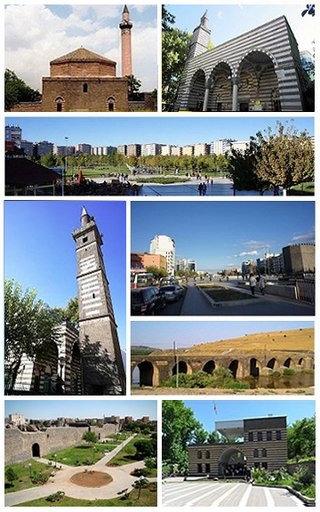
Diyarbakır Province is a province and metropolitan municipality in southeastern Turkey. Its area is 15,101 km2, and its population is 1,804,880 (2022). The provincial capital is the city of Diyarbakır. The Kurdish majority province is part of Turkish Kurdistan.

Hakkâri Province, is a province in the southeast of Turkey. The administrative centre is the city of Hakkâri. Its area is 7,095 km2, and its population is 287,625 (2023). The current Governor is Ali Çelik. The province encompasses 8 municipalities, 140 villages and 313 hamlets.

Mardin Province is a province and metropolitan municipality in Turkey. Its area is 8,780 km2, and its population is 870,374 (2022). The largest city in the province is Kızıltepe, while the capital Mardin is the second largest city.

Bitlis Province is a province of eastern Turkey, located to the west of Lake Van. It takes its name from the central city, Bitlis. Its area is 8,294 km2, and its population is 353,988 (2022). The province is considered part of Western Armenia by Armenians. The province is considered part of Turkish Kurdistan and has a Kurdish majority. The current Governor of the province is Erol Karaömeroğlu.
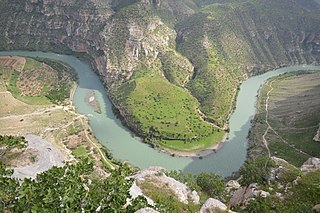
Siirt Province, is a province of Turkey, located in the southeast. The province borders Bitlis to the north, Batman to the west, Mardin to the southwest, Şırnak to the south, and Van to the east. Its area is 5,717 km2, and its population is 331,311 (2022). Its capital is Siirt. It encompasses 12 municipalities, 280 villages and 214 hamlets.

The Kurds are the largest ethnic minority in Turkey. According to various estimates, they compose between 15% and 20% of the population of Turkey. There are Kurds living in various provinces of Turkey, but they are primarily concentrated in the east and southeast of the country within the region viewed by Kurds as Turkish Kurdistan.
Turkification, Turkization, or Turkicization describes a shift whereby populations or places received or adopted Turkic attributes such as culture, language, history, or ethnicity. However, often this term is more narrowly applied to mean specifically Turkish rather than merely Turkic, meaning that it refers more frequently to the Ottoman Empire's policies or the Turkish nationalist policies of the Republic of Turkey toward ethnic minorities in Turkey. As the Turkic states developed and grew, there were many instances of this cultural shift.

Nazımiye is a municipality (belde) and seat of the Nazımiye District of Tunceli Province in Turkey. It had a population of 1,262 in 2021.
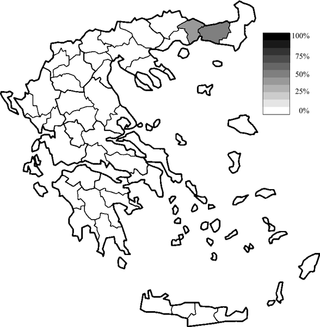
The Muslim minority of Greece is the only explicitly recognized minority in Greece. It numbered 97,605 according to the 1991 census, and unofficial estimates ranged up to 140,000 people or 1.24% of the total population, according to the United States Department of State.
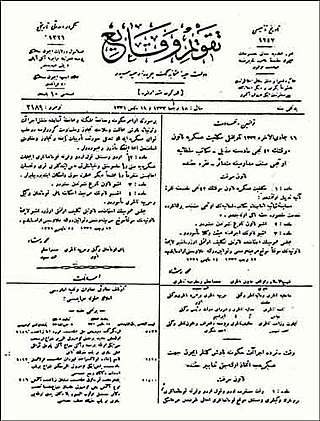
The Temporary Law of Deportation, also known as the Tehcir Law, or officially by the Republic of Turkey, the "Sevk ve İskân Kanunu" was a law passed by the Ottoman Council of Ministers on May 27, of 1915 authorizing the deportation of the Ottoman Empire's Armenian population. The resettlement campaign resulted in the deaths of anywhere between 800,000 and over 1,500,000 civilians, in what is commonly referred to as the Armenian genocide. The bill was officially enacted on June 1, 1915, and expired on February 8, 1916.

The Dersim rebellion was a Kurdish uprising against the central government in the Dersim region of eastern Turkey, which includes parts of Tunceli Province, Elazığ Province, and Bingöl Province. The rebellion was led by Seyid Riza, a chieftain of the Abasan tribe. In 1937 and 1938, the Turkish Armed Forces carried out three Dersim operations against the rebellion, including the Dersim massacre, of civilians: thousands of Kurds were killed and many others were internally displaced.
The Surname Law of the Republic of Turkey was adopted on 21 June 1934. The law requires all citizens of Turkey to adopt the use of fixed, hereditary surnames. Turkish families in the major urban centres had names by which they were known locally, and were used in a similar manner with a surname. The Surname Law of 1934 enforced the use of official surnames but also stipulated that citizens choose Turkish names. Until it was repealed in 2013, the eldest male was the head of household and Turkish law appointed him to choose the surname. However, in his absence, death, or mental incapacitation the wife would do so.
The 1934 Thrace pogroms were a series of violent attacks against Jewish citizens of Turkey in June and July 1934 in the Thrace region of Turkey. One of the main crucial factors behind the events was the Resettlement Law passed by the Turkish Assembly on 14 June 1934.

In Turkey, xenophobia and discrimination are present in its society and throughout its history, including ethnic discrimination, religious discrimination and institutional racism against non-Muslim and non-Sunni minorities. This appears mainly in the form of negative attitudes and actions by some people towards people who are not considered ethnically Turkish, notably Kurds, Armenians, Arabs, Assyrians, Greeks, Jews, and peripatetic groups like Romani people, Domari, Abdals and Lom.
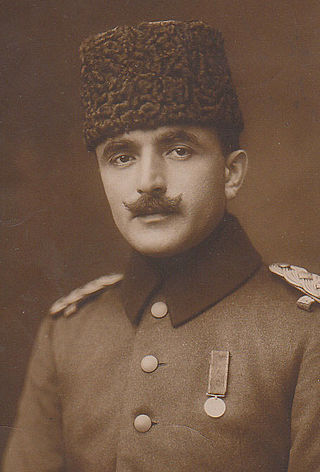
Place name changes in Turkey have been undertaken, periodically, in bulk from 1913 to the present by successive Turkish governments. Thousands of names within the Turkish Republic or its predecessor the Ottoman Empire have been changed from their popular or historic alternatives in favour of recognizably Turkish names, as part of Turkification policies. The governments have argued that such names are foreign or divisive, while critics of the changes have described them as chauvinistic. Names changed were usually of Armenian, Greek, Georgian, Laz, Bulgarian, Kurdish (Zazaki), Persian, Syriac, or Arabic origin.

Tunceli Province, formerly Dersim Province, is a province in the Eastern Anatolia Region of Turkey. Its central city is Tunceli. The province is considered part of Turkish Kurdistan and has a Kurdish majority. Moreover, it is the only province in Turkey with an Alevi majority. Its population is 84,366 (2022). The province has eight municipalities, 366 villages and 1,087 hamlets.

Mahmut Esat Bozkurt was a Turkish jurist, politician, government minister and academic. His birth name was Mahmut Esat. But after the adaptation of the Turkish Surname Law in 1934, he chose the surname Bozkurt in remembrance of the Grey Wolf, a symbol for Turkdom. The surname also refers to the Turkish steamer S.S. Bozkurt in the Lotus case. He was in the intellectual environment of the Turkish Hearths for almost two decades.

The late Ottoman genocides is a historiographical theory which sees the concurrent Armenian, Greek, and Assyrian genocides that occurred during the 1910s–1920s as parts of a single event rather than separate events, which were initiated by the Young Turks. Although some sources, including The Thirty-Year Genocide (2019) written by the historians Benny Morris and Dror Ze'evi, characterize this event as a genocide of Christians, others such as those written by the historians Dominik J. Schaller and Jürgen Zimmerer contend that such an approach "ignores the Young Turks' massive violence against non-Christians", in particular against Muslim Kurds.
The Fourth Inspectorate-General refers to a regional administrative subdivision in the Dersim region.
















